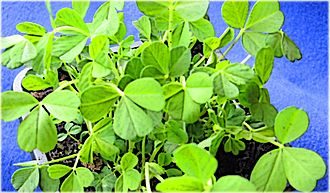Sheelah's Day facts for kids
Quick facts for kids Sheelah's Day / Lá Fhéile Síle |
|
|---|---|

Shamrocks are often seen on St. Patrick's Day and Sheelah's Day.
|
|
| Official name | St. Sheelah's Day / Lá 'le Síle |
| Also called | Sheelagh's Day / Síle's Day |
| Observed by |
|
| Type | Ethnic, cultural |
| Significance | A special day remembering the person believed to be St. Patrick's wife |
| Celebrations |
|
| Date | 18 March |
| Next time | 18 March 2026 |
| Frequency | Annual |
| Related to | St. Patrick's Day |
Sheelah's Day, also called Sheelagh's Day (in Irish, Lá 'le Síle), is an Irish cultural day. It is celebrated on March 18th, which is the day after St. Patrick's Day. Even though it is not widely celebrated in Ireland anymore, some people of Irish descent in places like Australia and Canada still have celebrations for it.
What is Sheelah's Day?
Sheelah's Day is a traditional Irish celebration. It happens right after the Feast of St. Patrick. This day is meant to remember Sheelah, or Síle. According to old Irish stories, Sheelah was either the wife or the mother of St. Patrick.
A Look at History
Old Irish newspapers and books from the 1700s and 1800s mention a wife of St. Patrick. The Freeman's Journal, a newspaper, talked about Sheelah's Day in 1785, 1811, and 1841.
People in Australia also celebrated Sheelah's Day in the 1800s. Today, Sheelah's Day is not officially celebrated in Ireland. However, it is still celebrated in Newfoundland, Canada. This is because Irish immigrants moved there in the late 1600s and brought their traditions with them.
In Newfoundland, this day might also be linked to the story of an Irish princess named Sheila NaGeira. Some experts also think there might be a connection between Sheelah's Day and the Sheela na gig. These are carvings of figures found in old buildings across Europe.

